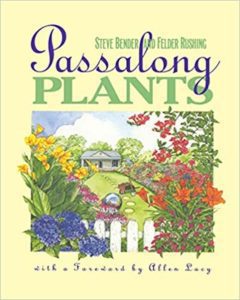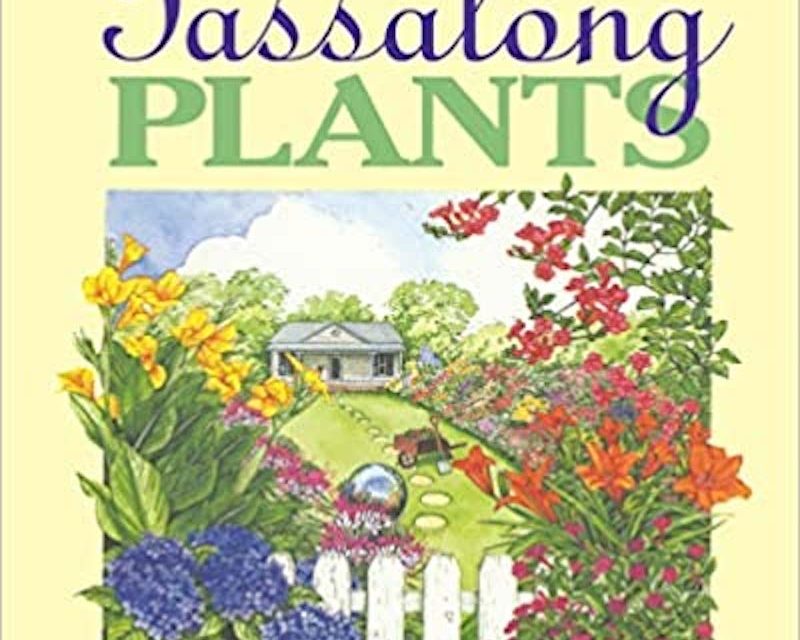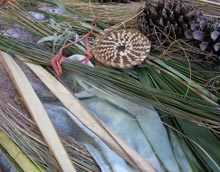 What are passalong plants, anyway? In colonial America, it all started before commercial plant and seed sellers became common. Colonists had to depend on what they had brought with them, and what was locally sourced from forests and meadows.
What are passalong plants, anyway? In colonial America, it all started before commercial plant and seed sellers became common. Colonists had to depend on what they had brought with them, and what was locally sourced from forests and meadows.
What horticulture they had brought with them consisted almost entirely of seeds for food crops. The colonists were unfamiliar with the seasons and the climate, so there was no guarantee that the seeds which they had would grow successfully in the New Country.
As the country became established, ship captains were encouraged to bring plants, cuttings and seeds from their worldly travels, and thus new plants were introduced into the country for the first time.
Ornamental plants were rare as the new settlers had precious little time to devote to them. By the 1700’s, ‘cottage gardens’, which were little more than a few pretty doorway plants, started to proliferate. The first commercial nursery and seed catalog was published in 1737. Our Founding Fathers were also our Founding Gardeners, since these four Presidents had extensive farms and the money to source plants locally, from the expanding western frontiers and from sea captains which were charged with bringing back exotic plants from their travels. They were responsible for many of the ‘heritage’ plants we enjoy today.
Remember that the 1789 Munity on the Bounty occurred as a result of water rationing for the crew because of the need to water the plants collected from the tropics. Although this was a British ship, plant cargos were not an uncommon practice for ships stopping in the Americas.
So what has that got to do with passalong plants? A lot. There was very little cash money to be had in early America, so bartering was a common practice and swapping plants was one of the few methods of increasing the diversity of your garden.
By definition, a passalong plant is a rooted division of a plant which you share with a friend or neighbor. It doesn’t have to be a native, rare or exotic – just one that is big enough to be divided, or seedlings which can be lifted and potted up. You could expand the definition to cuttings and seeds, as well.
There is something wonderful about passalong plants. It’s not impossible that a plant or two in your own garden are the great, great, (add as many as you want) grandchildren of a colonial plant. I have friends who have plants which they know were offspring of their grandmother’s plants, and they may have been passalong plants to begin with.
In my own garden, I know which plants I purchased or raised from seeds, and which came from friends. In the 13 years I have been producing the Lunch and Learn series at the Port Royal Farmers’ Market, I calculate that I have given away literally hundreds of passalong plants. And some of the receivers of those plants have brought descendants of those plants to Lunch and Learn to give away to new owners. I never know what kind or how many plants the Lunch and Learners will bring to each session to share, but their offerings are always abundant. Gardeners tend to have generous hearts.
A passalong plant is a wonderful gift to a new neighbor, or to celebrate a new baby, or to remember a loved one. But you really don’t need a specific reason to share plants. A passalong plant is such a personal gift; it took effort and love, not just a checkbook.
Plant Swaps have become an increasingly popular way to diversify your garden plantings without resorting to your piggy bank. Since Covid, the cost of plants, along with everything else has risen dramatically. A hundred dollars’ worth of plants used to fill a garden bed; now it barely fills a large container. Passalong plants have another advantage; they have proven they will grow and thrive here in the Lowcountry.
A passalong plant reminds me of mercy in Shakespeare’s ‘The Merchant of Venice.’ “It is twice blest; it blesseth him that gives and him that takes.”
That Shakespeare fella’ sure knew a thing or two about life, didn’t he?








